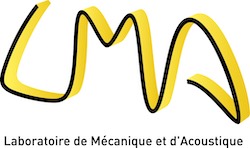Atomic steps are observed on vicinal surfaces – crystal surfaces slightly misoriented from the high-symmetry crystallographic planes – of crystalline materials where they form periodic arrays separating atomic terraces. Under appropriate experimental conditions, the epitaxial growth of crystals occurs through the propagation of these atomic steps. The deposited atoms diffuse on the terraces before attaching to the steps where they crystallize, with each step propagating at the same speed, providing a uniform crystal growth. A frequently observed instability is the step bunching : a bifurcation away from the above-mentioned uniform speed mechanism by which differences in step velocities result in the bunching of atomic steps, thereby forming “macrosteps” separated by wide terraces.
Since the pioneering work of Burton, Cabrera and Frank (BCF) the dynamics of steps has been modeled by accounting for adatom adsorption, desorption and diffusion on terraces and their attachement/detachement (a/d) to steps. Several improvements of this model, accounting for different physical mechanisms (elasticity, electromigration, asymmetry in a/d rates at steps – inverse Ehrlich-Schwoebel effect), have been proposed. However all existing analyses have been carried out in the framework of the quasistatic approximation, a mathematical assumption usually considered appropriate in regimes of low deposition rate. In this work, we develop a linear stability analysis of the general governing equations without resorting to that simplification and surprisingly find that the stability results are significantly modified, even in the regime of slow deposition. While this result questions the scope of the quasistatic approximation it also provides a new mechanism for step bunching which might be pertinent for the understanding of its occurrence in growth of GaAs(001) and Si(111)-7x7. Some recent post-bifurcation results on the development of step bunches will also be presented.


